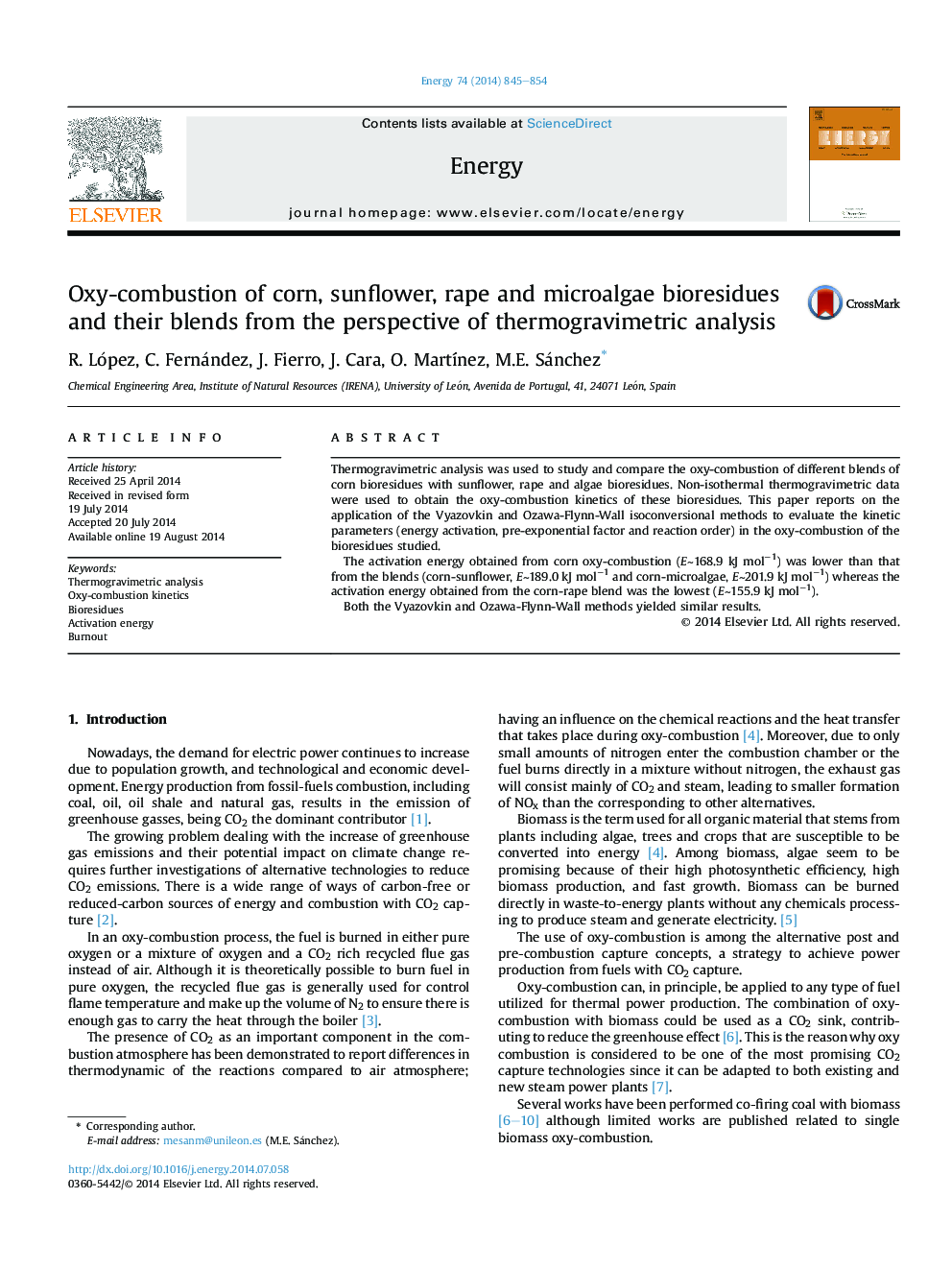| Article ID | Journal | Published Year | Pages | File Type |
|---|---|---|---|---|
| 1732516 | Energy | 2014 | 10 Pages |
•We study the effects of CO2 in oxidation of several biomasses and its blends.•Two isoconversional kinetic models are proposed to obtain kinetic parameters.•Kinetic parameters are calculated to improve equipment design investigation.•Microalgae has a lower thermal degradation than lignocellulosic biomasses.•The blending of corn-rape improves de oxy-combustion of individual biomasses.
Thermogravimetric analysis was used to study and compare the oxy-combustion of different blends of corn bioresidues with sunflower, rape and algae bioresidues. Non-isothermal thermogravimetric data were used to obtain the oxy-combustion kinetics of these bioresidues. This paper reports on the application of the Vyazovkin and Ozawa-Flynn-Wall isoconversional methods to evaluate the kinetic parameters (energy activation, pre-exponential factor and reaction order) in the oxy-combustion of the bioresidues studied.The activation energy obtained from corn oxy-combustion (E∼168.9 kJ mol−1) was lower than that from the blends (corn-sunflower, E∼189.0 kJ mol−1 and corn-microalgae, E∼201.9 kJ mol−1) whereas the activation energy obtained from the corn-rape blend was the lowest (E∼155.9 kJ mol−1).Both the Vyazovkin and Ozawa-Flynn-Wall methods yielded similar results.
